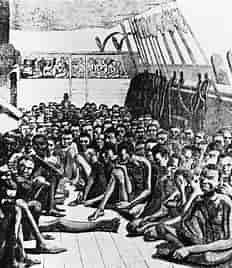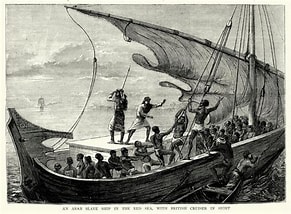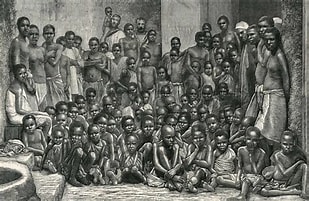The Transatlantic Slave Trade
Introduction
The Transatlantic Slave Trade is a dark chapter in human history that reshaped societies across continents. Between the 16th and 19th centuries, millions of Africans were forcibly taken from their homelands, subjected to unimaginable brutality, and sold into slavery in the Americas. This trade was not just a series of isolated incidents; it was a complex system that involved multiple nations and resulted in profound social, economic, and cultural consequences. In this article, we will delve into the historical context of the Transatlantic Slave Trade, examine its brutal realities, and discuss its lasting impact on both Africa and the Americas.
Understanding the Transatlantic Slave Trade
What Was the Transatlantic Slave Trade?
The Transatlantic Slave Trade refers to the forced transportation of enslaved Africans across the Atlantic Ocean to the Americas. It was part of a larger system known as the triangular trade, which involved Europe, Africa, and the Americas. Ships would leave Europe loaded with goods, exchange them for slaves in Africa, transport those slaves to the Americas, and then return to Europe with products like sugar, tobacco, and cotton.

Key Statistics
- Duration: The trade lasted roughly from the late 15th century until the mid-19th century.
- Estimated Numbers: Historians estimate that between 12 million and 12.8 million Africans were shipped across the Atlantic.
- Death Rates: Approximately 1.2 to 2.4 million enslaved individuals died during the Middle Passage due to disease, malnutrition, and abuse.
Historical Context
Early European Exploration
Portuguese Beginnings
The roots of the Transatlantic Slave Trade can be traced back to Portuguese exploration along the African coast in the late 15th century. Seeking gold and spices, Portuguese navigators established trading posts on the West African coast.
The Shift to Slavery
As European colonies in the Americas expanded, labor demands grew. Initially relying on indigenous populations for labor, Europeans quickly turned to Africa after witnessing devastating declines in native populations due to disease and violence.
The Rise of Sugar Plantations
Economic Demand
The establishment of sugar plantations in Brazil and the Caribbean created an insatiable demand for labor. Sugar was a lucrative commodity in Europe, leading plantation owners to seek out cheap labor sources.
Transition to African Slavery
By the early 16th century, African slaves became the primary labor force on sugar plantations due to their resilience against tropical diseases compared to European indentured servants.

The Mechanisms of Slavery
Capture and Transport
The Role of African Traders
While European powers initiated slave trading, many African leaders participated by capturing individuals from rival tribes or regions and selling them to European traders. This complicated dynamic involved local politics and rivalries.
The Middle Passage
The Middle Passage refers to the horrific journey enslaved Africans endured aboard slave ships. Conditions were appalling: captives were shackled together in cramped quarters with little ventilation or sanitation.
Life Aboard Slave Ships
Overcrowding and Disease
Slave ships were often overcrowded beyond capacity. Captives faced rampant disease outbreaks such as dysentery and smallpox. Estimates suggest that around 15% to 25% of those aboard did not survive the journey.
Psychological Trauma
The psychological toll on captives was immense. Many were separated from their families and communities, leading to profound feelings of despair and hopelessness during their confinement.
The Brutality of Slavery
Life on Plantations
Harsh Working Conditions
Once they arrived in the Americas, enslaved Africans were sold at auction and forced into grueling labor on plantations. They worked long hours under harsh conditions with minimal food or rest.
Punishments for Resistance
Any form of resistance or disobedience was met with brutal punishment. Enslaved individuals faced whipping, mutilation, or even death for attempting to escape or protest their conditions.
Family Separation
Breaking Bonds
Families were often torn apart during auctions; parents could be sold away from their children at any moment. This practice not only inflicted emotional trauma but also disrupted cultural continuity within enslaved communities.

Resistance Against Oppression
Acts of Defiance
Despite facing overwhelming odds, enslaved Africans found ways to resist their oppression:
- Revolts: There were numerous slave revolts throughout history; notable examples include the Haitian Revolution (1791-1804) and Gabriel’s Rebellion (1800) in Virginia.
- Subtle Resistance: Many enslaved individuals engaged in everyday acts of defiance—working slowly, sabotaging equipment, or maintaining cultural practices as forms of resistance against their oppressors.
Abolitionist Movements
Growing Awareness
As stories of brutality surfaced, abolitionist movements gained momentum in Europe and America during the late 18th century. Activists began advocating against slavery through publications and public speeches.
Key Figures
Prominent figures like Frederick Douglass in America and Olaudah Equiano—an ex-slave who wrote about his experiences—played vital roles in raising awareness about slavery’s horrors.
The End of the Transatlantic Slave Trade
Legal Abolition
British Abolition Act (1833)
The British Parliament passed legislation abolishing slavery throughout its empire in 1833. This act marked a significant victory for abolitionists but did not end slavery entirely; it took decades for complete emancipation across various regions.
American Civil War
In America, slavery became a central issue leading up to the Civil War (1861-1865). The Emancipation Proclamation issued by President Abraham Lincoln in 1863 declared all slaves in Confederate states free.
Legacy of Slavery
Socioeconomic Impact
The legacy of slavery continues to affect societies today. Racial inequalities rooted in this history persist across various sectors including education, employment opportunities, housing access—and systemic racism remains a pressing issue globally.
Cultural Impact
Preservation of African Heritage
Despite attempts at cultural erasure through slavery practices—enslaved Africans maintained aspects of their heritage including music traditions like jazz or spirituals which have shaped modern American culture significantly!
Contributions to Society
Enslaved Africans contributed immensely not only economically but also culturally; they laid foundations for agricultural practices while influencing cuisine styles across different regions!
Commemoration and Education
Memorials for Victims
Numerous memorials exist today honoring those who suffered during this dark period—these sites serve as reminders while fostering education about human rights abuses throughout history!
Importance of Education
Educating future generations about slavery’s impact is crucial! By understanding our past we can work towards building more inclusive societies that celebrate diversity rather than perpetuating division based on race or ethnicity!
Conclusion: Remembering Our Past
The Transatlantic Slave Trade represents one of humanity’s most profound failures—a tragedy fueled by greed hatred intolerance! By examining its historical context brutality effects—we gain valuable insights into how we can prevent similar atrocities from occurring again!
As we remember those lost during this horrific event let us commit ourselves toward fostering understanding compassion among diverse communities worldwide! Together we can work towards ensuring history does not repeat itself—because every life matters!
FAQs
1. What was the primary reason for the Transatlantic Slave Trade?
The primary reason was economic demand for labor on plantations in the Americas; enslaved Africans provided a cheap workforce essential for producing lucrative crops like sugar and tobacco.
2. How many Africans were forcibly transported during this trade?
An estimated 12 million Africans were forcibly transported across the Atlantic Ocean during this period; millions more died due to violence associated with slave raids before reaching ships.
3. What conditions did enslaved people face during transport?
Enslaved individuals faced horrific conditions aboard ships—overcrowding led to disease outbreaks while inadequate food/water caused suffering throughout their journey known as “Middle Passage.”
4. How did resistance manifest among enslaved individuals?
Resistance took many forms—from organized revolts like those seen during Haiti’s revolution—to subtle acts such as working slowly or preserving cultural practices despite oppressive circumstances.
5. What is being done today regarding education about this period?
Many institutions promote education about events like transatlantic slave trade through courses focusing on human rights issues; memorials also serve educational purposes while commemorating victims’ experiences throughout history!


